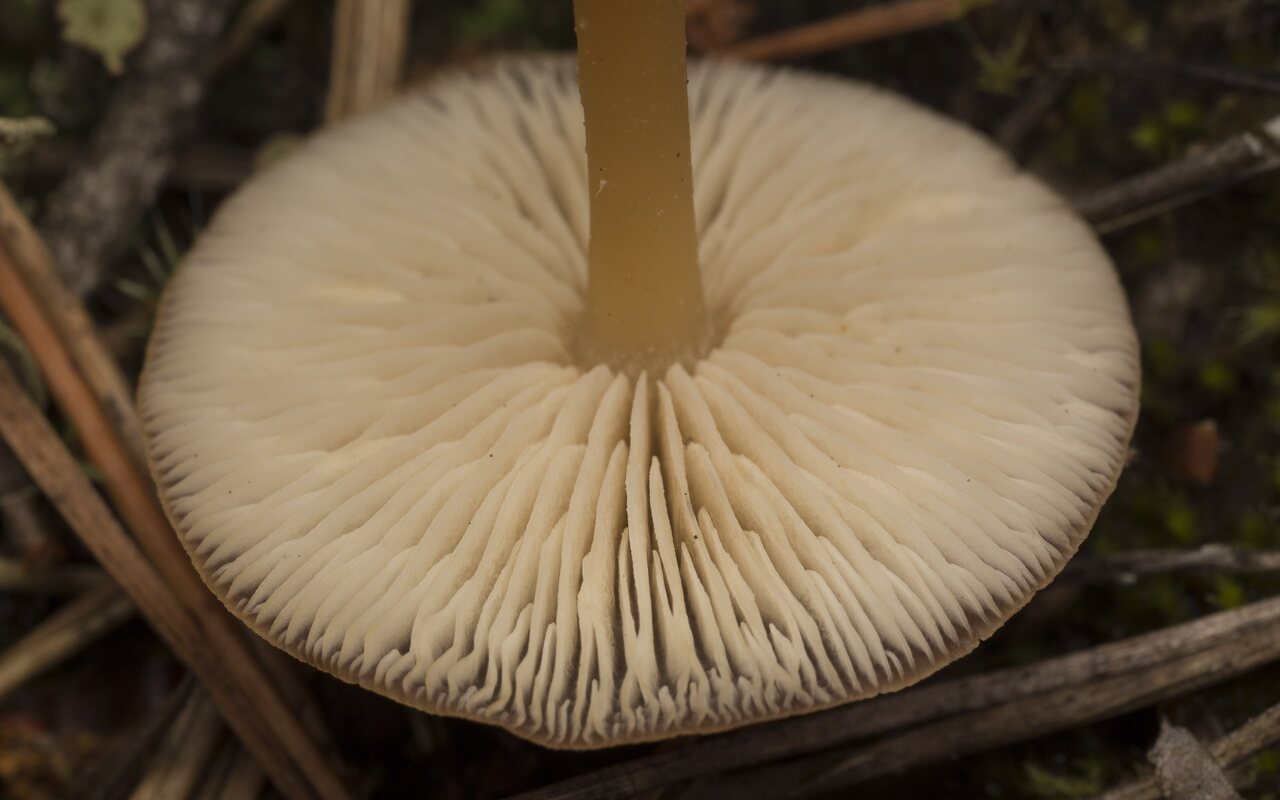
Rhodocollybia butyracea · sviestinė didplempė
- Collybia butyracea
- butter cap, buttery collybia
- Butter-Rübling, Kastanienrote Rübling
- sviestinė didplempė, sviestinė plempė
- pelēkā vērdiņsēne
- monetnica maślana
Tremendously variable in cap colour, between reddish-brown and pale grey, the caps of this species are initially convex, flattening but with a slight umbo and often turning up at the edge when fully developed. The cap diameter at maturity ranges from 4 to 9 cm. There are many forms of this species, and cap colour in particular is a poor guide to identification. All Butter Caps tend to become much paler when dry. The crowded adnexed or sometimes free gills are white or very pale cream. Of the same general colour range as the cap, but paler at the top and often covered in fine white hairs near the base, the stem tapers in noticeably towards the apex. At the base of the stem, which is often bent where it enters the soil, there is a spongy bulb. The stem is very tough and not easily separable from the cap.
The Butter Cap while generally considered edible is far from buttery in flavour. The stems are tough, but some people find the caps acceptable; however, there are plenty of much finer fungi if you want to gather free food from the forest.
Auga liepos - spalio mėnesiais, spygliuočių, lapuočių miškuose, dažniausiai grupėmis, mėgsta samanotas ir šviesias vietas, Lietuvoje dažnas. Kepurėlė 3–7 cm skersmens, paviršius lygus, glitus, senų - sausas. Spalva įvairuoja nuo šv. rudos, raudonai rudos iki kaštono spalvos. Kepurėlė jaunų dažniausiai plataus varpelio formos, augant plokštėja, senesnių kartais kraštai užsirietę būna į viršų. Kepurėlės centras gali būti tiek šviesesnio atspalvio tiek ir tamsesnio, dažnai turi gūbrelį, link kraštelių kepurėlė šviesėjanti, kartais su koncentrinėmis zonomis. Lakšteliai balti, šviesiai kreminiai, tankūs, priaugtiniai. Kotas 3–12 cm aukščio ir 0,5–2 cm storio, tamprus, kepurėlės spalvos ar šviesesnis, į pamatą nežymiai tamsėja ir storėja. Pilnaviduris, senesni kamštiniai tuščiaviduriai. Valgoma, menkavertė.
‥
0 comments
Add a comment
Comments